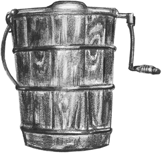EQUIPMENT AND SOURCE REFERENCE
At Bubby’s and at home, we give our equipment a pretty good workout. As a result, we’ve come up with some well-tested opinions about some tools and particular brands. Here’s what we’d recommend to our friends and neighbors.
We buy most of our equipment on the Bowery or at the Broadway Panhandler in Manhattan. Wherever you live, support your local independent cooking supply store and encourage them to stock pie-making equipment. If you can’t find what you need there, try searching cooking supply stores online, such as Williams-Sonoma or Sur La Table. We’ve included sources for rarer items like the cherry pitter we love.
Leifheit P37200 “Cherrymat” Cherry Pitter
This “Frucht und fun” modern wonder from Germany allows you to pit approximately 26 pounds (12 kilograms) of cherries per hour in its see-through hopper. It’s amazingly fast, easy to use, and easy to clean. Prices vary. It’s well worth the investment. Don’t get the pitter that looks like a stapler by mistake. Search online for this—we saw it at Target for $30.
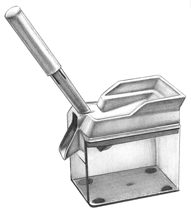
Pie Weights
We use dried kidney beans. They’re inexpensive and they can be used for blind-baking over and over without burning. The commercial pie weights are an unnecessary expense.
Apple Peeler/Corer/Slicer
This gadget clamps onto a counter and will impress and delight any child (or adult) who wants to be helpful. Avoid the suction ones because they are hard to secure in place. It not only peels your apples, it cores them too! All with the ease of reeling in a fish! It’s an indispensable tool for production baking because it’s fast and saves a lot of wear and tear on the hands (as anyone who has peeled huge batches of apples can testify)—and a good way to get family members to fight over who gets to help first.

Apple Wedger
An apple wedger can come in handy for cutting apples into uniform slices a whole apple at a time if you’re making a lot of apple pies. They work best with uniform apples and are less useful for small or oddly shaped apples.

Salter Microtronic Digital Scale, 5 Lb
Stainless steel. Easy to clean and use. For a home cook, it’s useful for dividing dough evenly for small pastries or dumplings. We use it most for reliably multiplying amounts for baking in large quantities.
http://www.williams-sonoma.com
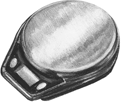
Pie Basket
Peterboro Basket Company makes an attractive two-pie basket we like to use.
Pie Safe
A pie safe can’t keep pies safe from people, but it does help keep bugs, rodents, and pets away from your pies as they cool. The added advantage of a pie safe is that it is ventilated with screen mesh or punched tin, and air is allowed to circulate freely around the pastry. Pie safes come in all sorts of different sizes, shapes, and designs. Antique or new pie safes are widely available on the internet. Some are small and portable; most resemble a large piece of furniture similar to a Hoosier or kitchen hutch, with screen or punched-tin side walls and doors.
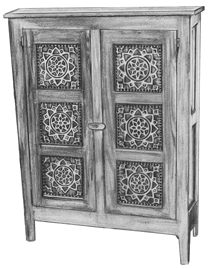
Rolling Pins
We favor a 20-inch extra-long beechwood handleless rolling pin, rounded off at the edge but not tapered. We’ve found that the handles on a rolling pin inevitably break off due to wear and tear, and applying the pressure directly to the pin with your palms gives you control that is more measured. The pin should be long in order to extend beyond the edges of the crust you’re rolling out. It’s worth getting accustomed to using this style of pin because it makes rolling out the pie dough evenly a lot easier.
Some bakers prefer marble or glass pins because they can be chilled, but we prefer wood because the flour adheres to the grain of the wood and keeps the dough from sticking to it. Wood pins are also a good weight to work with—not too heavy, not too light. If you are sentimental about a family heirloom or just like the way the short old-fashioned ones with handles work for you, they’re nice to have around, especially for young bakers. It’s lovely to know your great-grandma made pies with the same pin!

Pie Tins
It’s possible to get good results with many different types of pie plates or tins. We use 9-inch and 12-inch pans most often. Look for a pie plate with a flat lip or ruffled lip, but avoid the plates with lips that slope upwards.
A Pyrex glass pie plate shows how well the bottom crust is browning and conducts heat to it very well; it’s a good choice for a juicy fruit like rhubarb that, once cut, reacts and turns bluish when it comes into contact with some metal tins. Buy the kind with a flat-edged lip—the fluted one has too steep an incline for the crust edge to rest properly.
Go for a nice, heavy, dark pie plate if you’re buying metal—the crust will brown better in it. (But don’t pass up those beautiful old tins you come across at a yard sale. It’s nice to see words stamped in the tin underneath a cut pie.) A lot of the old pie tins have small holes in the bottom to help the crust crisp. We don’t really recommend these tins, but if you’re using them, be aware that you’ll definitely need to put a pan or foil directly below the pie plate to catch drips of butter during baking. When you cut into a pie in one of these old pie plates, you may need something underneath to catch juices that escape through these holes.
Ceramic and stoneware pie plates are beautiful for entertaining but not so great if you’re bringing a pie somewhere, because they’re quite heavy both coming and going. We use them for pot pies and deep-dish pies, especially for dishes without a bottom crust. Ceramic is less conductive of heat to the bottom crust in the initial high-heat setting stage of baking, but once it gets hot, it retains even high heat well.
At Bubby’s we use 9-inch disposable aluminum pie tins. The uniformity of these tins works well for restaurant use. It’s quite useful to have two lightweight tins that are exactly the same size for blind-baking crusts—one to hold the crust and one to nest inside it, filled with beans or weights. We also double up the pie plates, after the pie comes out of the oven, for strength and so that there is a clean tin covering the sticky tin the pie was baked in. Disposable tins are handy for pies that must be transported to events (they can be left behind). They can be purchased at any big grocery store.
Pastry Cutter/Blender
This curved cutting device makes fast work of cutting butter into the flour manually because it makes four cuts at a time. Because speed is one control a baker has in monitoring a cool dough temperature, the advantage is well worth it. It can be a little hard on the wrist if you are making multiple pies, so in those situations, use a food processor.
There are many flimsy pastry cutters on the market. Trust us—if you have to tighten the nut on the handle every time you roll out a crust, or bend steel wires back into place, you’re wasting good time. Choose a sturdy one with a plastic or soft handgrip, a securely attached handle with no movable parts, and rigid stationary stainless steel blades. If need be, you can use two table knives or a pastry scraper to cut the butter into the flour, but it’ll slow down the process, putting you at a disadvantage insofar as the fat temperature is concerned.
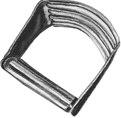
Pastry Scrapers
Some bakers use their scraper to cut the butter into the flour on a flat work surface. Do whatever works best for you. This is an invaluable tool for cleaning the rolling surface quickly and efficiently between rolling out crusts. It’s also handy for loosening a sticky patch of dough from the work surface and the rolling pin. We recommend both the plastic and the metal—the former for cleaning counters and bowls, and the latter for cutting fats, or trimming dough edges, and scraping stubborn dough off counters. Sometimes the metal ones have a ruler on them that comes in handy for cutting dough for pastries such as Homemade Pop Tarts.
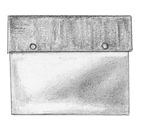
Food Processor
We use a Cuisinart® 6-quart food processor at home. We buy them from companies that offer a lifetime warranty because we give ours a decent workout. We use it quite often in the recipes in this book and highly recommend having one around.
Electric Mixer
The Kitchen-Aid stand mixers are durable and well-designed. Our favorite is the Professional 8-quart Kitchen-Aid Stand Mixer because it is flexible if you are cooking in larger quantities. Stand mixers are better than handheld because they allow you to have an extra hand free. You’ll need it for custards, ice creams, and the like.
Baking Sheets
You’ll want to have on hand at least two 13 x 18-inch-wide, heavy baking sheets with a lipped edge for resting pies on while they bake. They are indispensable for catching juices or melted drops of butter as they bubble over in the oven and preventing them from landing on the oven floor, where they smoke up the oven, the pie, and the house.
Metal Offset Pastry Spatula
Choose a long, thin one for spreading meringue, ganache, pudding, peanut butter mousse, and ice cream in ice cream pies, among other uses.
Baking Parchment Paper (Unwaxed)
Unwaxed baking parchment paper is useful for lining par-baked and blind-baked pastry pie shells. It is also often used for lining baking sheets under pastries—it prevents sticking and makes for easy cleanup.
Tin/Aluminum Foil
Aluminum foil comes in handy for lightly covering crusts that are browning too much, for making armatures (see Pork Pie Hats), and for covering leftovers that will be reheated in the oven.
Wide Plastic Wrap
Plastic wrap, 12 to 18 inches wide, makes it easy to cover a pie or batch of pudding as it cools.
Wire Cooling Rack
You’ll want one that’s large enough to fit a couple of pies.
Pastry Brush
We use a 1- or 2-inch pastry brush for painting milk or cream on pastry crusts and cobblers.
Pie Serving Spatula
A pie (triangular) spatula is indispensable for serving pie. It helps lift a wedge-shaped piece out of the tin intact.
Ravioli Cutter
We use a ravioli cutter for cutting lattice crust strips because we like the ruffled edge.
Cake Decorating Tips
It’s useful to have few different sizes of metal cake decorating tips with round holes. Use either end of the tip for cutting decorative vent holes in rolled out pastry.

Cookie Cutters
Use cookie cutters for cutting decorative vent holes in rolled-out pastry. A few different small ones in metal are best.
Melon Baller
A melon baller makes quick and clean work of coring pears, apples, and quinces, especially for baked dumplings. It’s also good for half-moon shaped cuts in a pastry crust.
Fine-Mesh Sieves
Fine-mesh sieves are useful for straining custards and berry sauces, dusting powdered sugar, and for washing fragile fruits. Buy a sturdy, stainless steel one about 8 inches in circumference.
Candy, Deep-Fat, Meat, Freezer, and Oven Thermometers
All four of these thermometers are extremely helpful: candy thermometers for making caramel, deep fat thermometers for frying pastries, meat thermometers for roasting meats for savory pies, freezer thermometers for making ice cream, and oven thermometers for making sure your oven is properly calibrated and up to speed. Opt for a good quality thermometer—the whole point is accuracy, and often the cheap ones are off.
Tart Pans
If you like tarts, it’s good to have a number of sizes of tart pans on hand. Our recipes often call for a 10-inch tart pan, but you can always make small individual ones instead. Tart pans typically have a removable disc-shaped bottom that nests inside a fluted straight-walled edge.
Silicone Spatulas
Silicone spatulas are useful for scraping down anything you make in an electric mixer.
Pie Birds
Pie birds (or pie funnels, as they are sometimes called) are optional ornaments that serve the same purpose as a vent hole in a top crust (see Pie Vents, Markings, and Pie Birds for Double-Crust Pies). They are hollow upright ceramic birds that nest in the center of a pie to vent steam out through their open mouths. There are beautiful birds (and a good deal of other species) to collect—ours is black with a yellow beak in a crowing posture. They are often available at cooking supply stores, and many unique ones, both antique and new, are available online.

Ice Cream Makers
We recommend the wooden electric motor-driven version of the old-fashioned hand-cranked machine that uses rock salt and ice, or the good old-fashioned hand-cranked machine itself. The reason why we like these best: They offer the best control over the temperature; you can keep adding ice and salt to chill down the mixture. White Mountain™ makes a 4- or a 6-quart Holmes Rival traditional electric/hand-crank ice-cream maker that is easy to find online through websites like NextTag.
